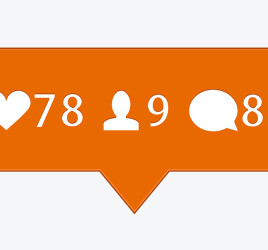
Search Engine Optimization Checklist
If you want to win big online, then you must consider improving your use Search Engine Optimization to improve your ranking. It really isn’t that hard, especially if you know the blueprint. Of course we’ll be giving you the complete checklist so you don’t have to go crazy. Don’t take our word for it though, try these tips to better your results online. You’re at the right place if you want to increase exposure and improve traffic. When search engines like Google or Yahoo see you’re making an effort, they’ll give you the props! When they like you, your impressions and clicks increase!
Use the Search Engine Optimization checklist to improve SEO ranking online.
- Have a Primary Keyword
This isn’t hard at all. There’s a difference between “on-page” and “off-page” SEO. Your primary keyword must be set on-page. Once you do that search engines recognize your intent. - More Than 300 Words
Keep adding content until you’re over 300 words. No seriously, this is a big one. Do not neglect this. Having more content is valuable, and won’t be ignored! Avoid being lazy and take the time to write great content. - Use The Description, Title, & Headlines
These are all ways to get on search engines. In fact this is the first place you should start. Your keyword should be prominent in all three. You’ll be rewarded for getting your primary keyword as the first few words in your title. - Credible Outbound Links
Link your article or page to a resource away from your website. Do that and you’ll benefit. - Short and Simple Sentences
Keep it simple. If you follow the principles of Flesch-Kincaid Readability Tests you’re on the right track! - Low Keyword Density
You should have your primary keyword placed a few times across your content. Keyword density score helps measure that. It can be subjective, but to give you a sense this article is 0.7% in keyword density, which is awesome! We mention our primary keyword 5 times, can you guess which one it is? Don’t worry, we’ll reveal the answer in a bit! - Placement of Primary Keyword
There’s a few places where you’ll need your primary keyword. Your subheading should definitely include this. Your “Heading 2” (in HTML we call that <H2>) can have your primary keyword placed. You should also have it in the first paragraph setting as well. You’l have maximum impact on rankings this way! - Credible Back-Linking
Not the only way, but one of the strongest way to boost your Search Engine Optimization. By having forums and blogs mention your primary keyword and back-link to your specific article or page, search engines will crawl your listing. Just be smart with this. If you don’t understand it then don’t do it. You must make sure the content is authentic and raw! One of the more advanced ways to achieve authenticity and greater output is spinning content, and distributing it on a mass scale. Again, this is pretty advanced so just stick to writing authentic content if you’re not sure about this. - Auto-Pinging Search Engines
You can let the search engines know about your site! That’s right, who would have thought you could actually communicate with them!? Here are a few sites where you can submit your link: http://www.bulkping.com/ and http://www.pingomatic.com will get this job done for you! - Alternative Tags For Images
Every image you put online has an “alt-tag”, which is what helps you get on places like Google Images. Use this because it’s another source for traffic! Not everyone is looking articles, many people (millions) are going through images as well. - Call To Action Link
Don’t shy away from this. If you have something to sell, let it be known! Put a hyperlink to the page where people can contact you. You’re building internal links and that also helps your search engine ranking. - Primary Keyword in URL
Our primary keyword is “Search Engine Optimization” for this article. We’ve gone ahead and actually put it in the URL. We’ve found this to be a massive way to get the attention of search engines (especially Google). Make sure your permalinks include your keyword. - 301 Redirects
If you’re updating an article or page you’ve published before. You could be put in a position where you’ll have to redirect your old URL. Doing this will ensure that traffic to the old URL gets redirected. Besides, you don’t want anyone lost right?Need help with your Search Engine Optimization? We can help with that, contact us to get a quote.
- Bio
- Latest Posts
About
President of Mirza Int'l, Author, SpeakerLatest Posts
Facebook Comments



